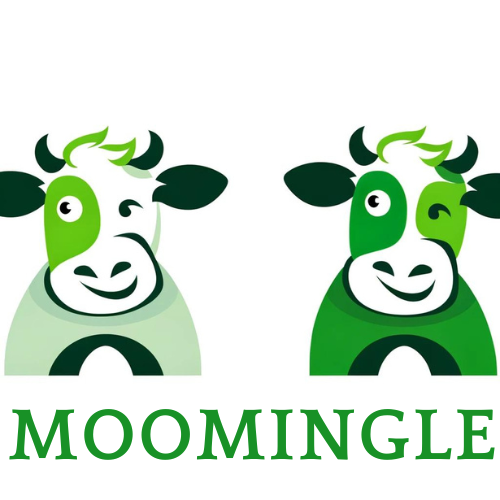Goat Milk: A Comprehensive Guide to Its Benefits and Uses

When people think about milk, the cow usually gets all the glory. But let's not overlook the humble goat and its milk that's jam-packed with goodies. It's like the secret superstar of the dairy world, not just a specialty sip. Goat milk packs a hefty punch of digestible protein, making it a heavyweight contender against cow milk, soy milk, or those nutty milks like almond and rice milk. It's the sort of drink that doesn't just sit in your belly; it gets right to work, being easily used by your body.
Now, some folks find cow milk and their bellies aren't the best of friends. That's where goat milk can slide in and say, "no worries, I've got you". With research backing up the claim, goat milk might not rile up those allergies like its cow counterpart tends to do. That's a big win for about one in four babies who turn their noses up at cow milk because of allergies. And for anyone waving the dairy-free flag? Checking if goat milk can be your ally could be a smart move - just make sure to have a chinwag with your doctor first.
But goat milk isn't just about drinking. No, sir. It's versatile. From a creamy base for your cereals to a tangy ingredient in your cooking, it's like the Swiss army knife of the dairy world. Whether you're whipping up a breakfast fit for a king or looking for a healthier creamer for your coffee, goat milk's there to jazz things up. It's not just a choice; it's an upgrade to your eating lifestyle, offering a bouquet of benefits wheeled straight to your door.
Exploring the Nutritional Landscape of Goat Milk
Stroll through the lush green fields of Wiltshire, and you might just stumble upon a goldmine of nutrition - goat milk. This isn't your average pint. It's organic, pasteurised, and packed with all the good stuff your body craves. Think of it as a nutritional powerhouse, bustling with a rich source of protein and a treasure trove of essential vitamins and minerals. The kind of drink that doesn't just quench your thirst but feeds your body too.
But here's the kicker - it freezes and thaws like a dream, thanks to being naturally homogenised. Plus, this milk flaunts its versatility by coming in stylish, reusable 1-litre bottles. Sourced from grass-fed goats who probably enjoy one of the best views in North Wiltshire, it's like getting a bottle filled with the countryside's best. Stacked high with protein, calcium, and those vital vitamins and minerals, it's a no-brainer for anyone looking to give their diet a nutritional upgrade.
Goat Milk vs Cow Milk: A Detailed Comparison
Imagine a boxing ring, and in one corner, we've got goat milk, and in the other, cow's milk. Ding ding! As far as the nutritional scoreboard goes, goat milk lands a pretty solid punch with more protein and calcium per gulp. But wait, there's more. It seems goat milk has a special move – enhancing your body's ability to soak up essential nutrients from your grub. Cow’s milk, on the other hand, sometimes plays dirty by messing with the absorption of iron and copper when they hit the stomach at the same time.
Now, as we age, some folks find that lactose starts to throw a spanner in the works, leading to lactose intolerance. Here’s where goat milk might just have the upper hand again. With slightly less lactose than cow’s milk, it’s like it's saying, "Come on in, the water’s fine" to those with mild lactose intolerance. Plus, when turned into yogurt, goat milk lowers its lactose levels even more, making it a gentler option for the tummy. So, for folks tiptoeing around dairy due to digestive discontent, goat milk might just be the ticket.
The Role of Goat Milk in Plant-Based Diets
In the bustling arena of milk alternatives, plant-based options like hemp milk and rice milk have been strutting their stuff on the runway. They've become the go-to for vegans and the lactose-averse crowd, flexing their non-animal dairy muscles. But here's the twist: while they're busy turning heads, goat milk rolls up its sleeves, ready to show that it too can find a spot in the plant-based spotlight. Nutritionally, it brings something unique to the table that some plant milks might miss.
Although goat milk hails from our furry friends and not from plants, it carves out its own niche for those playing for Team Plant-Based but are open to a little dairy dalliance. With plant milks varying widely in their nutritional profile, goat milk steadies the ship with a consistent supply of protein, essential vitamins, and minerals. Sure, it's not plant-based by the book, but for folks exploring the edges of their dietary map, it offers a nutritional compass that's hard to ignore.
Incorporating Goat Milk into Your Diet
Inviting goat milk into your diet is like inviting a friend who's always got something interesting to share. It blends seamlessly with your morning routine, from a splash in your coffee to the powerhouse behind your smoothie. Thanks to its creamy texture and rich nutritional profile, it kicks up the flavor and the health benefits of your meals and snacks. Whether you're reaching for a glass to start your day or using it as a secret ingredient in your culinary creations, goat milk is ready to mix things up and keep them interesting.
Delicious Goat’s Milk Labneh Dip: A Step-by-Step Recipe
If you're eager to dip your toes into the world of goat's milk dairy, starting with yogurt is a smart move. And when it comes to yogurt, why not take things up a notch with a delicious Goat’s Milk Labneh Dip? It's the kind of snack that makes your taste buds dance with joy. Smooth, creamy, with a tang that whispers tales of the Middle East, it's the perfect companion to your crackers or veggies. Ready to be the star of your next gathering, this labneh dip is more than just food; it's a conversation starter.
Ingredients Needed for Your Homemade Labneh
Gearing up to make the leap into homemade labneh territory? Here's what you'll need: a jug of goat's milk (the star of our show) and a dash of patience. While we're borrowing the sour tang from cow’s milk yogurt as our starter, the real magic happens when goat's milk joins the party. It's like inviting the cool cousin over who knows how to turn an ordinary get-together into a feast of flavors. Also, ensure you're stocked up on olive oil and za'atar for dressing and a pinch of love for good measure.
Ahead of embarking on this culinary adventure, gather your tools too. A cheesecloth to strain the mixture, a good-quality thermometer, and some jars for storage. Remember, making labneh is not just cooking; it's crafting an experience. With these ingredients and tools, you’re not just prepping food; you’re setting the stage for a delicious masterpiece that'll have everyone talking.
Directions for Crafting the Perfect Dip
Starting your labneh journey involves a bit of kitchen wizardry but fear not, it's the fun kind. Kick things off by gently warming the goat's milk – you're not cooking here, just bringing it to a cozy temperature. Stir in a bit of cow’s milk yogurt to introduce those good bacteria and cover. The wonder of fermentation does its thing overnight while you catch some Zs. By morning, you've got the base for your labneh.
Next up, the big squeeze. Line a colander with cheesecloth, pour in your mix, and let gravity do its work. What drips through is liquid gold, leaving behind thick, creamy goodness. Spoon your labneh into a bowl, drizzle with olive oil, and sprinkle with za'atar for that Middle Eastern flair. Serve with warm pita or crisp veggies, and watch as your creation becomes the talk of the table. Congrats, you've just crafted the perfect dip, brimming with taste, tradition, and the unmistakable tang of adventure.
Transitioning to Goat Milk: Tips for a Smooth Formula Introduction
Switching from cow's milk to goat's milk can be a bit of a leap for some folks, but it doesn’t have to feel like jumping over the moon. First off, goat's milk is naturally homogenised. That means it mixes up real nice and smooth, without those clumps and layers you might find in other milks. So when you're looking to make the switch, start by mixing it into your diet bit by bit. You might not even notice the difference at first, but your body will thank you for the gentler introduction.
Another smart move is keeping an eye out for the organic stuff. That usually means it's coming from goats who've been chomping on the good grass from places like the lush fields of Wiltshire, where the goats are living the dream. This kind of milk is not only tastier but also richer in those all-important nutrients. Start by swapping out your morning cow's milk for goat's milk in your cereal or coffee. Before you know it, you’ll be wondering why you didn’t switch sooner.
Beyond Drinking: Other Uses of Goat Milk
Now, let's not pigeonhole goat's milk into just a drinking category. This versatile liquid gold has got a few tricks up its sleeve. First up, cheese-making. Goat milk cheese, or as the fancy folks call it, chèvre, is creamy, tangy, and downright delicious. But don't stop there. Goat milk can be a game-changer in your baking recipes as well, bringing a subtle richness to breads and pastries that you didn't even know you were missing.
And for those with a knack for DIY, goat's milk can be turned into some luxurious skin-care products. Soap made from goat's milk? Absolutely. It's gentle on the skin and a natural moisturiser, making it perfect for those with sensitive skin or conditions like eczema. Lotions and creams, too, can harness the hydrating power of goat's milk, leaving your skin feeling baby soft. So, next time you're looking at a bottle of goat's milk, remember it's not just for drinking.
The Art of Goat Milk Cheese Making
Delving into the art of making goat milk cheese feels a bit like joining an exclusive club. The basics to get you started? Good quality milk, a bit of patience, and the willingness to enjoy a few mishaps along the way. But once you’ve got the hang of it, the sky's the limit. From the tangy soft cheeses to the aged hard ones, the flavors you can create will have you pondering why you didn’t start this venture sooner.
Key Tips for Beginners
First and foremost, quality matters. You’ll want to source the freshest goat's milk you can find, preferably from happy, grass-fed goats trotting around those green fields. Remember, better milk equals better cheese. Next up, cleanliness is key. Cheese making is a bit like science class – everything needs to be sterilised to avoid any unwanted guests in your cheese. And patience, my friend, is not just a virtue but a necessity. Good cheese takes time.
Lastly, start simple. There’s no need to dive headfirst into the deep end with complicated recipes. A simple soft cheese or even a basic chèvre is a great place to begin your cheese-making journey. As your confidence grows, so can your cheese repertoire. And before you know it, you'll be the go-to cheese person among your mates.
Consumer Insights
When it comes to goat milk, people are chatting, and it’s not just idle gossip. Folks appreciate the subtle taste differences and are quick to point out the easy digestion compared to cow's milk. Many find themselves surprised by how creamy and rich it feels, expecting something more...goaty. And when they find out about the potential health perks—like those mighty fine vitamins and minerals, not to mention the calcium boost —they’re even more intrigued.
There’s also a lot of talk about the eco-friendlier side of goat farming. Smaller farms and happier goats mean less impact on our dear old planet Earth, and that’s something people are willing to raise their glasses to. Throw in the ability to freeze and thaw without turning into an alien substance, and you’ve got yourself a winner in the kitchen. It seems like goat milk might just be sliding its way into more fridges these days.
What People Are Saying: A Look at Customer Reviews
Scrolling through the customer reviews feels a bit like peeking into a diary—everyone’s got their own story about why they switched to goat milk. Some rave about the smoother taste and how it’s a game-changer in their morning coffee. Others talk up the health benefits; less bloating, better skin, and a happier gut seem to be common themes. And for those with little ones, the gentler formula has been a lifesaver, making mealtimes a lot less stressful.
Of course, it’s not all sunshine and rainbows. A few folks mention it takes a minute to get used to the taste, especially when switching from cow's milk. But the consensus? Once you give it a fair shake, there’s a good chance you won’t be turning back. Whether it’s for health reasons, ethical considerations, or just to shake things up in the kitchen, goat milk is getting some solid thumbs up from the crowd.
Final Thoughts on Choosing Goat Milk
When it comes down to wrapping your head around the idea of replacing your regular milk with something a bit different, goat's milk stands out as a prime candidate, not just for its novelty but for the sheer range of benefits it brings to the table. This nifty alternative delivers a mightier punch of essential vitamins like vitamin B6, vitamin B12, pantothenic acid, and folic acid. Not to mention, it's kinder to the stomach thanks to its smaller fat globules and higher content of essential whey protein. On the flip side, like any good tale of nutrition, it’s key to remember that this isn't just about what’s in it but how it fits into your lifestyle. With goats milk, you're looking at an ingredient that's versatile enough to jump from your morning cereal bowl to an exotic dish you're trying to impress the guests with.
Moreover, let’s not forget the innovative ways this milk makes its journey from lush fields to your fridge, boasting a freshness that could rival the morning dew. Its organic, pasture-fed origins are not just fancy labels but a testament to the quality and sustainability of what you’re getting. Besides, for those dabbling in the culinary arts, the magic of transforming goat's milk into products like butter, ice cream, or even infant formula speaks volumes of its utility. So, when mulling over whether to introduce goat's milk into your diet, consider not just the nutritional benefits but also its role in supporting ethical farming practices and contributing to a more diverse and sustainable food system.




